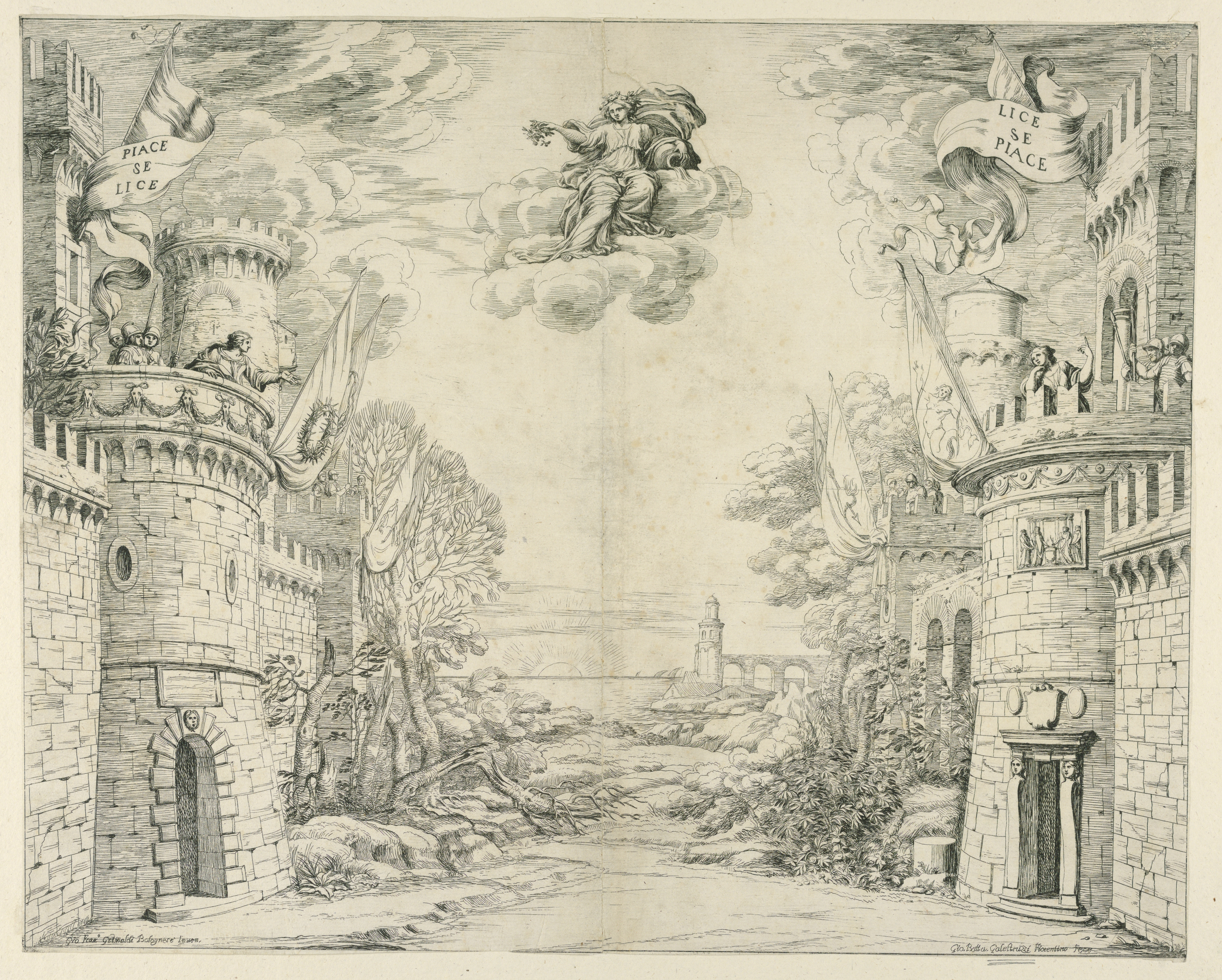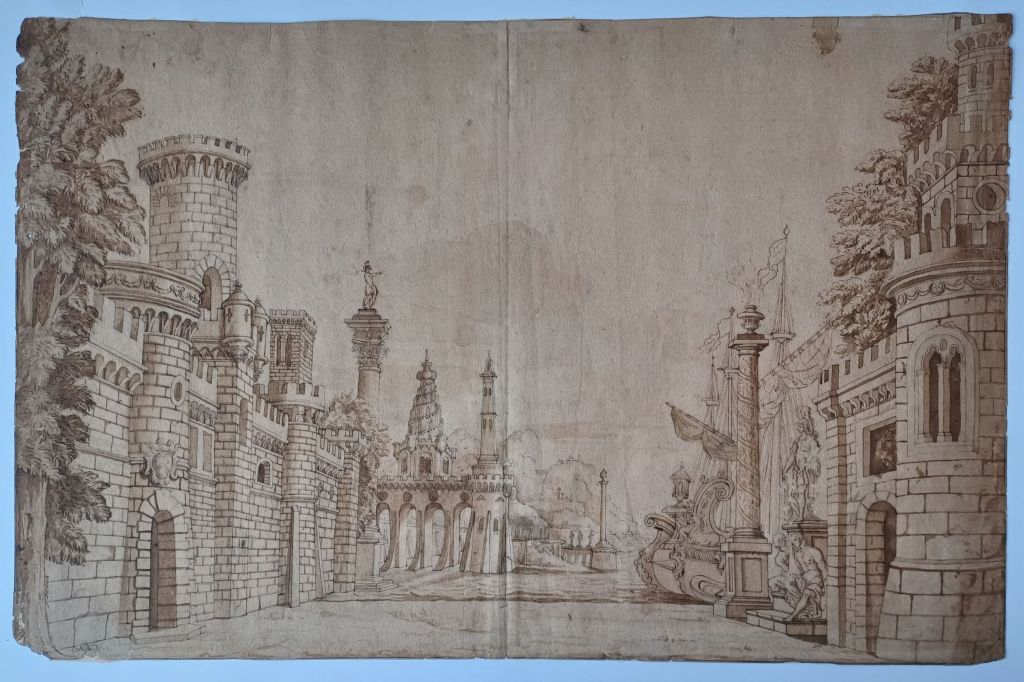Last week at Bassenge a nice drawing was sold [lot 6645]. Attributed to a general French school from the 17th century was this beautiful drawing in pen and wash on paper.

- Jh. Capriccio mit einem Hafen. Feder in Braun, braun laviert. 34,5 x 52,7 cm. Wz. IHS mit Nebenmarke (Heawood Nr. 2969-69a, Paris 1694). [sold for Eur 800]

The auction house very kindly provided me with the picture of the verso of the drawing, which reads ‘Le port de Livorno’. Indeed, in the far background is the sea to be seen, and a large boat approaching from right. Moreover, on the right is the distinctive monument of the four moors, which has been welcoming visitors from the sea for the last 5 centuries (made between 1595-1626).
The attribution is essentially based on the paper watermark, however, I believe there are some elements connecting this drawing to Italy, more precisely, to the Italian theatrical scene from the half of the seventeenth century.


ovvero Il Trionfo della Pietà (1656)
There are quite some striking similarities between the drawing and the print reproducing the scenes designed by Giovanni Francesco Grimaldi (1605/6-1680) for the dramma per musica La Vita Humana ovvero Il Trionfo della Pietà, staged for the first time in Rome in 1656. It was a rather special occasion as it was commissioned to celebrate the presence of Christine of Sweden at the Palazzo Barberini.
The original drawings for the scenes are collected between the Biblioteca Vaticana and the British Museum [see Danuta Batorska, Grimaldi’s Designs for the Sets of “Il Trionfo della Pietà ovvero La Vita Humana”, in Master Drawings, 1994, Vol. 32, No. 1 (Spring, 1994), pp. 40-49]. However, this drawing might be another version of it, as it is filled with other references to the Barberini context. See for example the distinctive cupola of the church of St. Ivo alla Sapienza, designed by Francesco Borromini (1599-1667) and realized by 1660, and possibly also the coat of arms on the top of the door on the left, although there is a banderole dividing the space between the three bees of the crest.
Then, why the French paper? As a quite expensive and fine object, paper did travel from country to country along with its owner, so it won’t be surprising to find foreing paper in a different place than its original. It is well known for instance, that Rembrandt used to buy Japanese and Italian paper, though he never moved from the Netherlands. Nevertheless, Francesco Grimaldi did actually move to France, though for a very short amount of time, between 1648 and 1650 circa, when his skills were requested by Cardinal Mazarin. Then, the bolognese artist decorated some portions of the Louvre and the – halas destroyed – ceiling of a palace.
(This is a preliminary note. Stay tuned for more)

